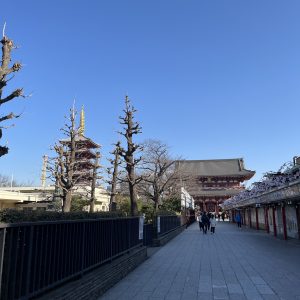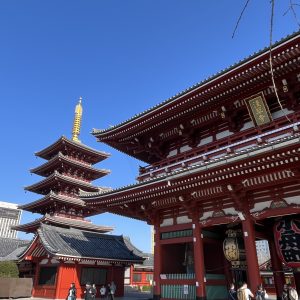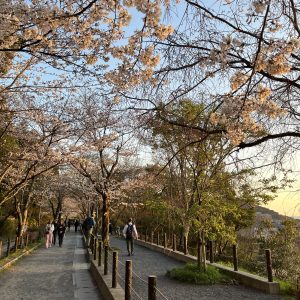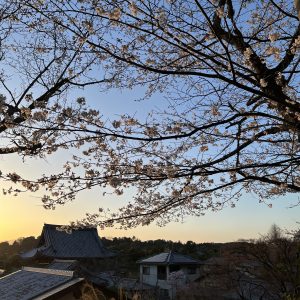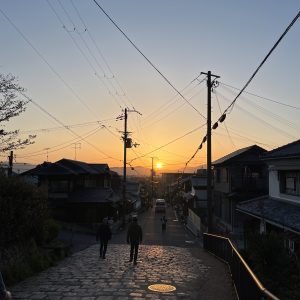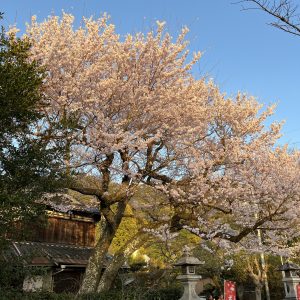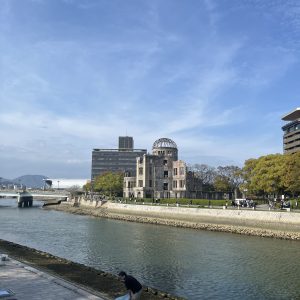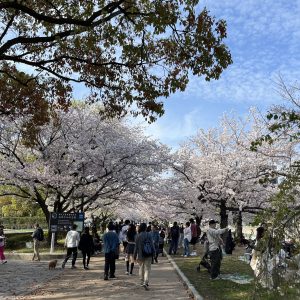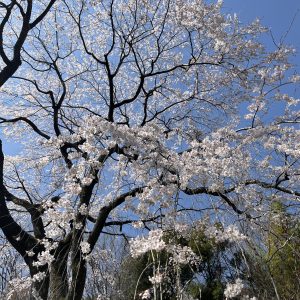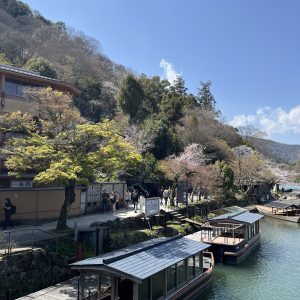By Jiaheng
The arrival of Spring symbolizes the end of a frosty, barren winter and the arrival of new beginnings. Awakened from months-long hibernation, earthly creatures begin roaming the Earth in search of sustenance, while the countryside bursts into kaleidoscopic colors.
Arriving in Tokyo on the Spring Equinox, I was well-timed to partake in this celebration of life. The Spring Equinox, as I soon learned, was an important date in Japanese culture. Being one of two days in a year where day and night are of equal length, it was historically celebrated in agrarian societies for its utilitarian purpose to mark the change of seasons. While its practical role has faded with the progress of modern technology, the Spring Equinox’s cultural significance remains: the equal length of day and night symbolizes the balance between light and darkness, yin and yang, and the harmony of opposing forces.
Armed with my 50 liter backpack, I strolled past a deserted Senso-ji temple on my way to the accommodation in Tokyo. A glance at my Apple watch display would remind me of the reason for its emptiness: it was 7am on a Wednesday, and also an unseasonably chilly morning at 5 degrees celsius, along with strong winds certain to give you a makeover. While the cold was biting, I could not help but marvel at the tranquil surroundings. Clear blue skies stretching into the horizon, a rhythmic chime of bells as they swayed in the wind, and a sparse but steady procession of devotees entering the sprawling complex.
Interspersed between museum-trips and local delicacies, the hunt for cherry blossoms formed an integral part of the itinerary. While they could be found virtually everywhere during peak bloom, it took considerable effort to spot a blooming tree in the first week of my arrival. Cherry blossoms are incredibly sensitive to temperature fluctuations, and the exact timing of its bloom is driven by local temperatures during the winter and early spring. As Japan had a particularly frosty two weeks in early March (as evidenced by my subsequent Uniqlo haul), the first bloom was delayed till further notice.
“Delayed till further notice”. While that phrase usually evokes annoyance in most cases (like a 6h flight delay), I took great humor in its application to cherry blossoms. In a society like Japan where nothing is “unpredictable” and everything runs with clockwork efficiency, I was tickled by the Japan Meteorological Agency’s unsuccessful daily attempts to predict the first bloom of cherry blossoms.
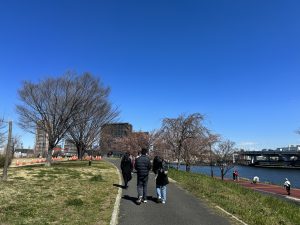
Our inability to predict the bloom of cherry blossoms reminded me of the original intent of the Spring Equinox celebrations: despite the advent of modern technology, humans can never control the well-paced cycles of the natural world. To quote my favorite line from Godzilla, “The arrogance of man is thinking that nature is in their control and not the other way around.”
I woke up each morning peering out of the window, eagerly in search of the pink and white flowers emerging from their buds. That was usually followed by a double take on my phone to verify the date against “first bloom” dates on the JMA website. Yep, the cherry blossoms were nowhere to be found: I finally could empathize with the villagers in Aesop’s “The Boy Who Cried Wolf”. Eventually, I gave up and moved on to better things in life (sushi, castles, vending machines etc.), and decided that the cherry blossoms would reveal themselves sooner without my impatient glare.
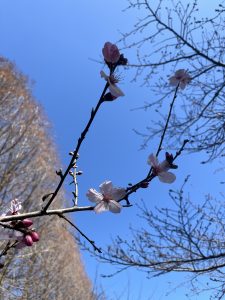
My time in Japan was further enriched by the unique bastions of Japanese culture and history. Kyoto, in particular, proved to be an interesting contrast to Tokyo. Its role as a center of politics and culture for 1100 years meant that it has witnessed Japan’s transformation from an unremarkable East Asian power to one of the world’s biggest economies. Yet its compact size and unique architecture meant that the city had a much more reserved vibe than the sprawling metropolis that is Tokyo.
Kyoto’s traditional architecture, with its wooden temples and gardens, harmonizes perfectly with the lush greenery, offering picturesque views at every turn. As the weather warmed, the mild and sunny spring day proved to be a perfect backdrop against the old-world charm of Kyoto and the vibrant colors of spring. The sunset at the Philosopher’s Path was particularly memorable, and I’ll let the pictures speak for themselves.
Following a 50 mile adventure on the Shimanami Kaido cycling route (an insane experience which I’ve covered on the DGYP Instagram), I headed to Hiroshima. Alighting at the heart of the city, Hiroshima appeared to resemble any other major Japanese city: clean, efficient, and modern. A first-time visitor would struggle to differentiate the streets of Hiroshima and Tokyo, because both exude the same sense of order that have come to define Japanese cities. Yet beneath the well-paved limestone roads lies a city in ashes, obliterated by a devastating atomic bomb during World War II.
Prior to embarking on my 3 weeks in Japan, Hiroshima was high up on my list of places to visit. Growing up in a land with painful memories of its occupation by Japan, I wanted to learn about the impact of war, recognize and reconcile historical injustices, and reflect on the ethical and moral perspectives in retaliatory warfare.
As groups of tourists throng to the Hiroshima Peace Memorial Park, seeking the most photogenic view of the cherry blossoms lined along the Motoyasu River, the Atomic Bomb Dome on the river banks has seemed to blur into the background.
I sat on the bench by the A-Dome and wondered.
Perhaps this is an visceral emblem for peace: conversations surrounding it are often too heavy and polarizing, and we much rather seek escape through the universally uncontroversial. After all, you can create animosity discussing politics, but can never offend anyone complimenting the blooms of spring.
The land in which this park is built on is an overt reminder of its tattered past, an intertwined story of power, conflict, and technology. Without deliberate effort to step into the hallowed halls of history, the devastating effects of the past are largely erased in a city rebuilt after the war.
But we must remember: the silent whispers of history are only audible to those who are willing to take their glance away from the pink and white hues. Though it is never a comfortable experience, we must never forget our history, because those that fail to learn from history are doomed to repeat it.
I close this blog post with a fitting tribute to the cherry blossoms, a loyal companion throughout my journey in Japan. Here’s “Loveliest of the trees, the cherry now” by A.E. Housman.
“Loveliest of trees, the cherry now
Is hung with bloom along the bough,
And stands about the woodland ride
Wearing white for Eastertide.
Now, of my threescore years and ten,
Twenty will not come again,
And take from seventy springs a score,
It only leaves me fifty more.
And since to look at things in bloom
Fifty springs are little room,
About the woodlands I will go
To see the cherry hung with snow.”
P.S: The cherry trees Housman describes are cherry ‘fruit’ trees in England, while Japan’s famed cherry blossoms are typically ornamental. Nevertheless, both species produce beautiful flowers in spring, which I thought was fitting for the occasion.


